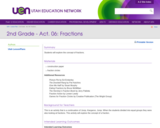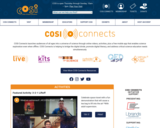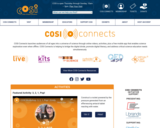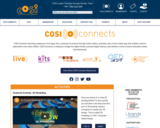
In this lesson students will explore the concept of fractions.
- Subject:
- Mathematics
- Material Type:
- Lesson Plan
- Provider:
- Utah Education Network
- Date Added:
- 02/16/2021

In this lesson students will explore the concept of fractions.

Explore the apparent movement of the Sun along the horizon as it sets at different time of the year in this time-lapse video [1:31] from WGBH. The video helps students analyze and describe regular patterns of the Sun's position in the sky over time and compare the Sun's position at different times of the year. Support materials include: Background Reading, Teaching Tips, and Discussion Questions.

Celebrate space travel with a fun demonstration that will cause a tea bag to lift into the air! *With adult supervision.

Construct a rocket powered by the pressure generated from an effervescing antacid tablet reacting with water.

Bring the vocabulary of film to life through the processes of filmmaking. Students learn terminology and techniques simultaneously as they plan, film, and edit a short video.

This project will introduce you to a complex engineering concept visually. After your engineer challenge is complete, you can collect observations on your 3-D bubble wand's form and performance.

Welcome to the final project in Digital Product Innovations! For the Unit 3 Project, your students will choose from three different project options. The previous projects provided a user, but for this project, students will need to find their own user in the community then use design thinking, entrepreneurship, advanced 3D modeling and 3D printing to create and market an innovative product for a real user! In Lesson 1, each student will read all three project overviews. Then, they will choose the project they want to work on for the remaining lessons in the project!
Estimated time required: 1-2 class periods.
Technology required for this lesson: 3D Modeling Software, Digital Fabrication Tools, Laptop/Desktop, Tablet.

In this lesson, students will learn more about their user and complete the first two steps in the Design Thinking process: Empathize and Define. Note: Students should only work on the content that corresponds to their project choice. For example: if a student chose Project 3A, they would only work on the Project 3A content.
Estimated time required: 1-2 class periods.
Technology required for this lesson: 3D Modeling Software, Digital Fabrication Tools, Laptop/Desktop, Tablet.

In this lesson, students will brainstorm and list ideas for their project (this is called ideation!). Next, students will sketch their three favorite ideas for the project, then draw a prototype plan.
Estimated time required: 1-2 class periods.
Technology required for this lesson: 3D Modeling Software, Digital Fabrication Tools, Laptop/Desktop, Tablet.

In this lesson, students will create a physical prototype and a 3D model in OnShape for their project. Note: Students should only work on the content that corresponds to their project choice. For example: if a student chose Project 3A, they would only work on the Project 3A content.
Estimated time required: 3-4 class periods.
Technology required for this lesson: 3D Modeling Software, Digital Fabrication Tools, Laptop/Desktop, Tablet.

In this lesson, students will share their up-cycled prototype and 3D model with their end user, receive and record feedback, then make adjustments based on that feedback. Note: the lessons for 3A, 3B, and 3C are almost identical in this section. This is a great chance for students to share their project with a real user and improve the design.
Estimated time required: 1-2 class periods.
Technology required for this lesson: 3D Modeling Software, Digital Fabrication Tools, Laptop/Desktop, Tablet.

In this lesson, students will 3D print their project (if possible), create a pitch video for their project, share their project with their peers, give/receive feedback on each other’s projects, export and submit their designs, and answer a series of reflection questions.
Estimated time required: 3-4 class periods.
Technology required for this lesson: 3D Modeling Software, Digital Fabrication Tools, Laptop/Desktop, Tablet, Video Editing Software.

Did you know that our engineers custom build a lot of the equipment used in Berkeley Lab research? Meet some of some of the people behind the big magnets and running experiments on our Advanced Light Source! Stay for a quick introduction to TinkerCAD and learn about the ways in which our scientists and engineers used 3D Design and fabrication in their work.

Students will use critical thinking, creativity, collaboration and communication skills to create 3D models of bubble wands using Tinkercad CAD software. The Tinkercad software used in this activity is a tool to help students develop a STEM mindset. It is important to allow students to work through the process as independently as possible with the facilitator acting only as a guide.
Estimated time required: 1 class period.
Technology required for this lesson: 3D Modeling Software, Laptop/Desktop, Tinkercad CAD software.

Have you heard of or tried 3D printing before? In this activity, you will learn a bit about the first part of 3D printing: using a computer to create your 3D design. This is called 3D modeling, or CAD: Computer-Aided Design.

This is an applied project where your students will choose from three different project options, each with three different users, then use Design Thinking, entrepreneurship, and 3D modeling to create an innovative product for a real user in Ancient Greece! In Lesson 1, each student will read all three project overviews. Then, they will choose the project they want to work on for the remaining lessons in the project!
Estimated time required: 1-2 class periods.
Technology required for this lesson: 3D Modeling Software, Digital Fabrication Tools, Laptop/Desktop, Tablet.

In this lesson, students will learn more about their user and complete the first two steps in the Design Thinking process: Empathize and Define. They will complete an empathy map and create a well-crafted problem statement.
Estimated time required: 1-2 class periods.
Technology required for this lesson: 3D Modeling Software, Digital Fabrication Tools, Laptop/Desktop, Tablet.

In this lesson, students will ideate and sketch designs for their project.
Estimated time required: 1-2 class periods.
Technology required for this lesson: 3D Modeling Software, Digital Fabrication Tools, Laptop/Desktop, Tablet.

In this lesson, students will create a physical prototype and a 3D model in TinkerCAD for their project.
Estimated time required: 2-3 class periods.
Technology required for this lesson: 3D Modeling Software, Digital Fabrication Tools, Laptop/Desktop, Tablet.

In this lesson, students will 3D print their project, share their project with their peers, give/receive feedback on each other’s projects, export and submit their designs, and answer a series of reflection questions.
Estimated time required: 1-2 class periods.
Technology required for this lesson: 3D Modeling Software, Digital Fabrication Tools, Laptop/Desktop, Tablet.